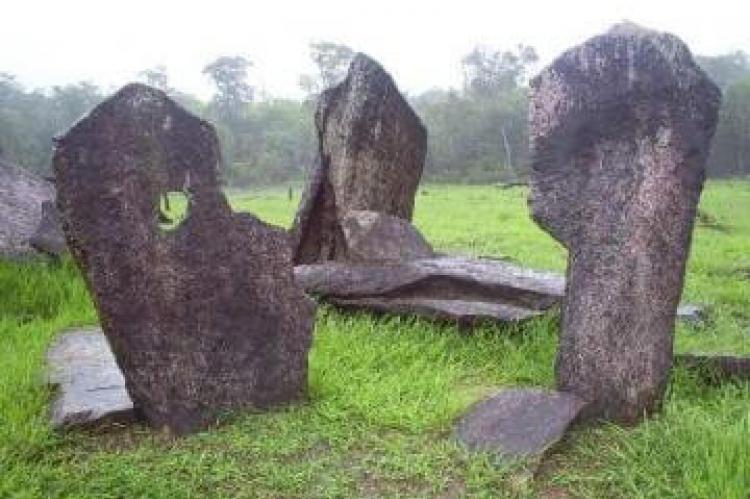Parque Arqueológico do Solstício (Brazil)
The Parque Arqueológico do Solstício (Solstice Archaeological Park) is located in Amapá state, Brazil, near the city of Calçoene. The site contains a pre-Columbian megalithic stone circle, colloquially known as the Amazon Stonehenge.
Parque Arqueológico do Solstício
The Parque Arqueológico do Solstício (Solstice Archaeological Park) is an archaeological site located in Amapá state, in the north of Brazil, near the city of Calçoene. The site contains a pre-Colombian megalithic stone circle, colloquially known as the "Amazon Stonehenge."
The megalithic site consists of 127 blocks of granite, each up to 4 m (13 ft) tall, standing upright in a circle measuring over 30 m (98 ft) in diameter. It is located on a hilltop on the bank of the Rego Grande River. Around this megalithic monument, burial sites demonstrate complex rituals with funerary pits.
After conducting radiocarbon testing and carrying out measurements during the winter solstice at the Rego Grande site, scholars in the field of archaeoastronomy determined that an indigenous culture arranged the megaliths into an astronomical observatory between 1,000 - 2,000 years ago, or at least five centuries before the European conquest of the Americas began.
Archaeologists theorize that the site, referred to in academic sources as AP-CA-18, was built by indigenous peoples for astronomical, ceremonial, or burial purposes and likely a combination. The function of this archaeoastronomical site is unknown, much like other sites such as Stonehenge, a much older site in Great Britain.
Since the end of the 19th century, scientists have studied these complex societies in the Amazon Basin. Other megalithic structures have been found in this part of the Amazon, including French Guyana.
Evidence has been found near the Rego Grande site and all over the Amazon to suggest that the indigenous people of the region lived in complex societies that involved both agriculture and a close relationship with the natural environment around them.
The Government of Amapá intends to create a state park to preserve the site, which would have the infrastructure for visitors and a museum. It is located about 7 km (4.3 mi) from the municipal seat of Calçoene and 384 km (238 mi) from Macapá.
